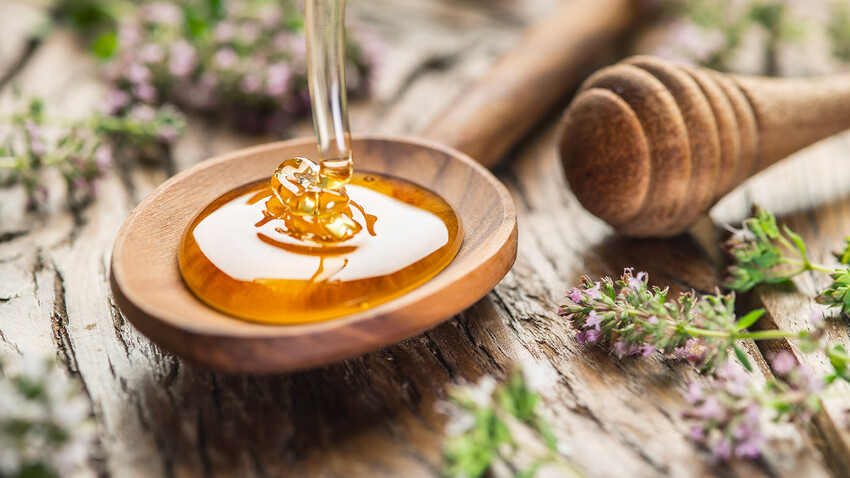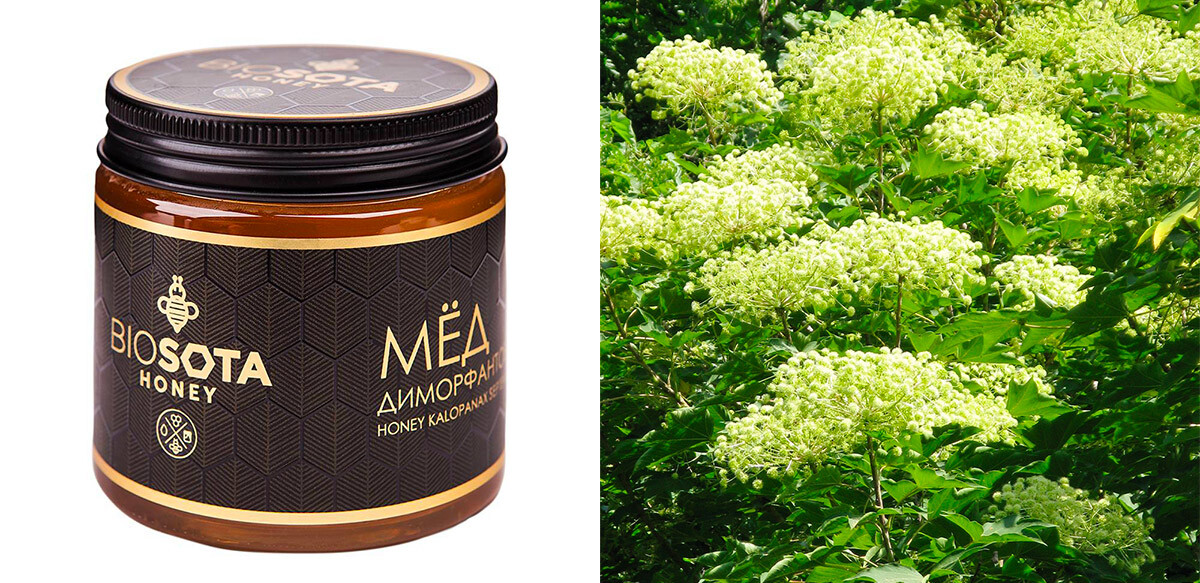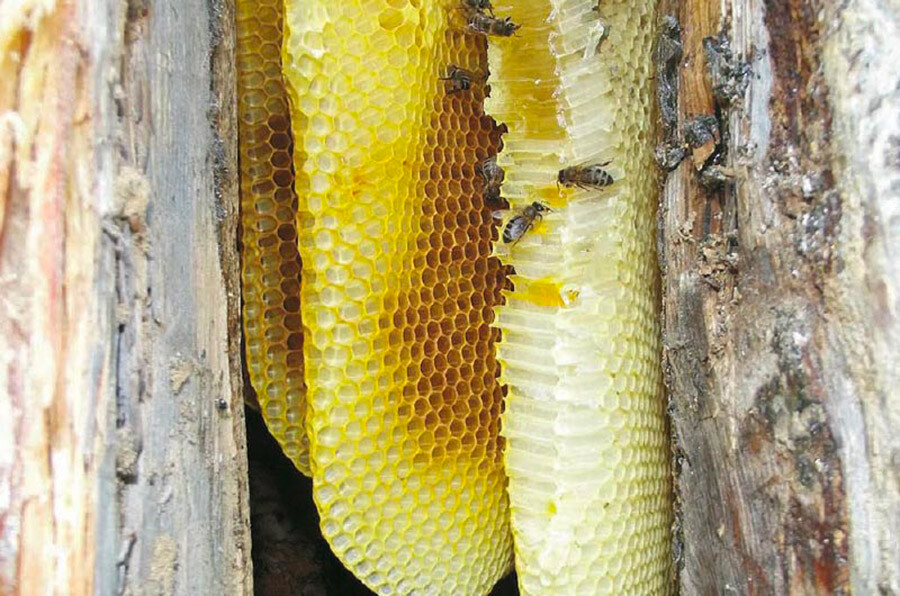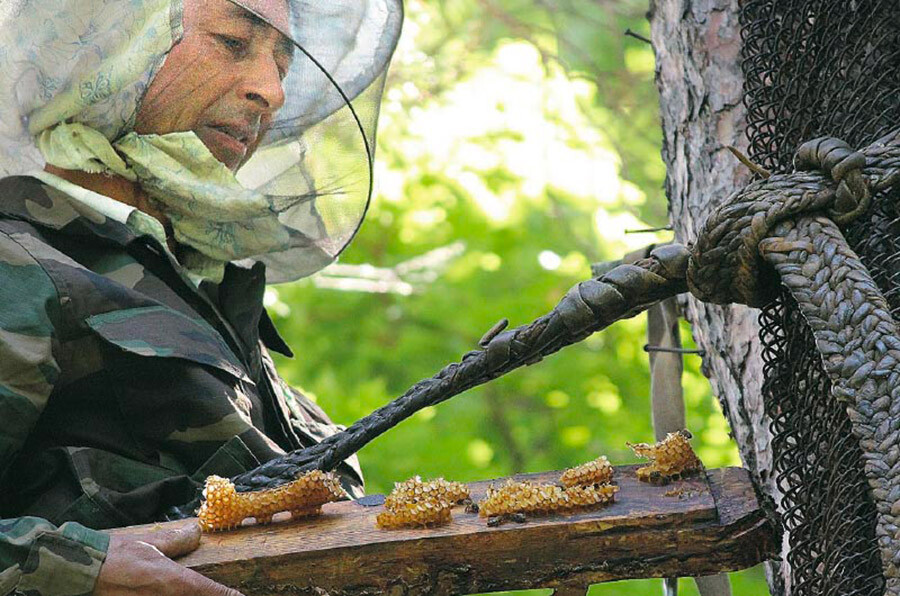
From forests to mountain peaks, every corner of Russia contributes to the palette of honey flavors.
Valentyn Volkov/Getty Images
This is a rare type of honey that is collected in Primorsky Krai (situated in the Far East). Dimorphanthus (or Calopanax semilopastny) is a relict tree, which is rarely found in nature and is listed in the Red Book of plants. But, its main peculiarity is that it blooms only once every three or four years, so honey from it is quite expensive.
Dimporphant honey has a rich dark color and deep aroma with woody and fruity notes. It contains tonic adaptogens, which experts compare to the useful substances in ginseng. It is high in amino acids, antioxidants, enzymes and vitamins. It is recommended to take it in case of high physical activity and/or severe stress.

About 100 years ago, French traveler and ethnographer Paul Labbé wrote in his book ‘By the Roads of Russia. From Volga to Urals’: "Sometimes we came across wide and rough steps cut with an ax in tree trunks, on which Bashkirs climb 10-12 meters up, where a beehive is located. The giant trunk, at first glance perfectly healthy, in fact, turned out to be hollow: Ural bees live in the hollows of spruces, lindens and plane trees (the author called plane tree a sharp-leaved or plane-like maple - ed.) and linden honey is considered the best and most fragrant."

Indeed, the rare Bashkir honey is extracted from beehives located in tree hollows, although the traditional method of honey production in removed honeycombs is also widespread in the region.
Scientists also note the special type of Bashkir bees, which are characterized by frost resistance, resistance to many parasites and honey production with a short honey harvest period. The diversity of local vegetation also has an impact – about 300 species of honey-bearing plants grow in Bashkortostan.
In terms of the number of enzymes per unit volume, Bashkir honey significantly outperforms competitors from other regions – its diastase number is from 22 to 50 (honey from the south of Russia has from 5 to 8, honey from Altai – 18). Because of its health benefits, Bashkir honey is included in the diet of Russian cosmonauts.
In Altai, pieces of ‘maral’ antlers (large Siberian deer) are added to flower honey to obtain a product with tonic and antimicrobial effects. ‘Maral’ antlers have a tubular structure that is filled with blood. The surface of the horns is covered with a thin skin with a nap. They contain a complex of active substances – fats, calcium, magnesium, iron, phosphorus, silicon, sodium, potassium, as well as amino acids and phospholipids.
It is believed that ‘maral’ antlers have a beneficial effect on the liver, stimulating its regeneration in toxic and traumatic injuries. Honey with ‘maral’ antlers has a slightly tart taste with a refreshing tonic aftertaste.
Altai produces many types of honey, but the most valuable, ecologically pure and difficult to extract is considered to be mountain honey. This is polyfloral honey, i.e. it is collected on the basis of several herbs growing in the foothills of the Altai Mountains.
Thanks to a variety of herbs in its composition (clover, cypress, acacia, honeysuckle, blackthorn, oregano, wild raspberry), this honey has a rich aroma and the taste is multifaceted – sweet-sour-bitter. Most often, local mountain honey is light yellow, but it can also be red-brown. It strengthens the immune system and helps fight colds.
If using any of Russia Beyond's content, partly or in full, always provide an active hyperlink to the original material.
Subscribe
to our newsletter!
Get the week's best stories straight to your inbox